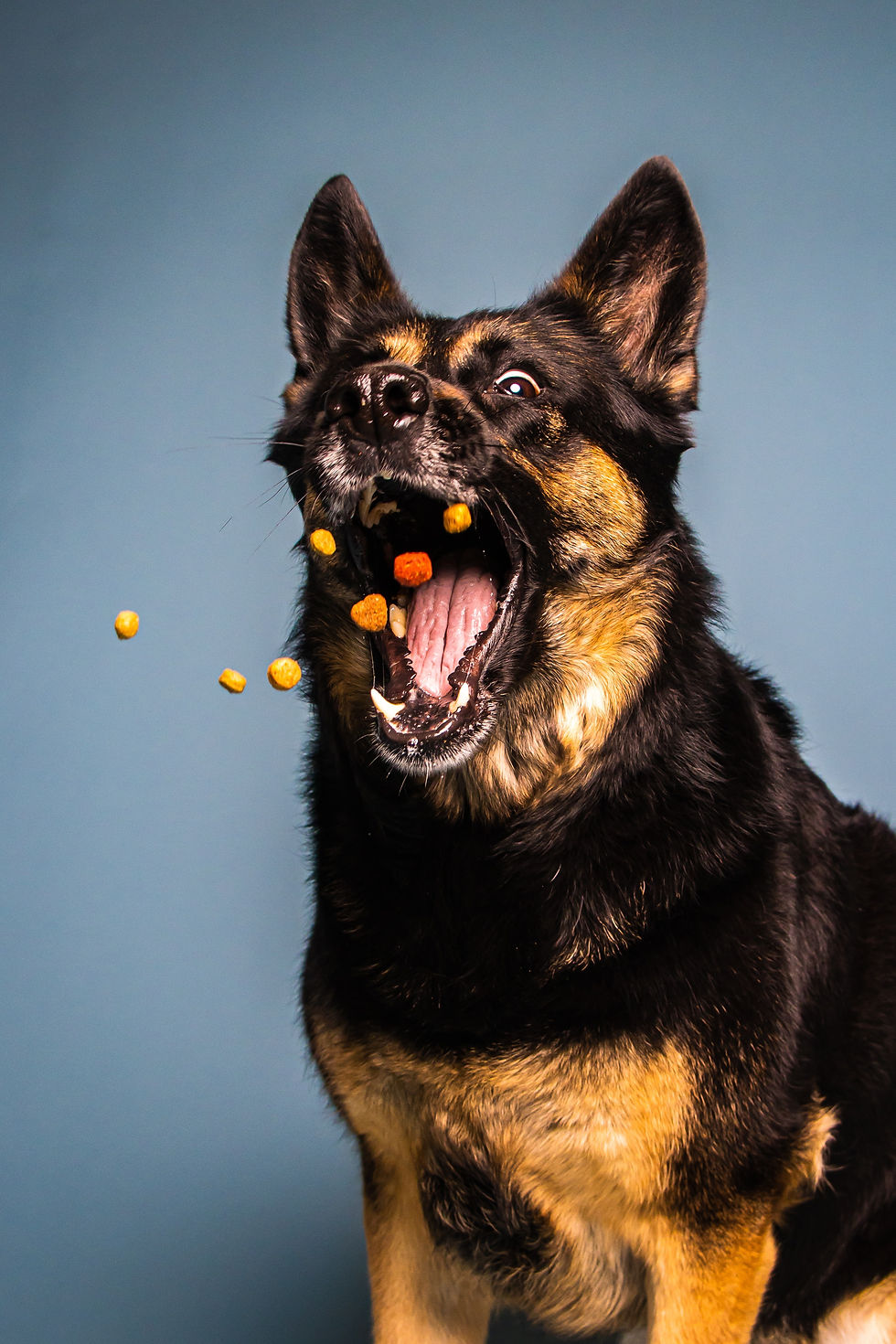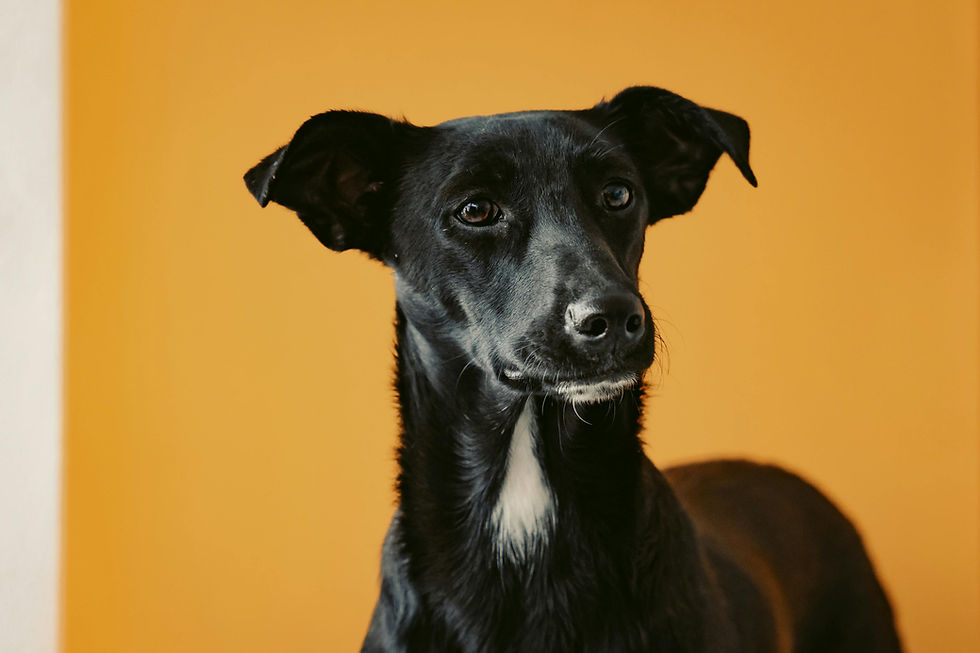Tricks for Treats: How, When, and Why to Use Food in Dog Training
- Leanne James
- Aug 23, 2025
- 3 min read

*Disclosure: We only recommend products we have used ourselves and trust. This post may contain affiliate links and we may earn a small commission at no additional cost to you.
Food is one of the most powerful motivators in dog training — not just because dogs love to eat, but because it’s a clear, universal way to communicate, reinforce good choices, and build trust. But there’s more to using treats than just “give the dog a snack.” How we use food matters just as much as the food itself.
As a certified professional dog trainer and licensed veterinary technician with 20 years of experience, I’ve seen firsthand how strategic food rewards can change behavior, boost confidence, and strengthen the human-dog bond. Let’s break it down.
1. How to Deliver Treats Strategically
Food can be more than a simple hand-to-mouth reward:
🐾Food lures – Hold a treat so your dog follows your hand into a position (e.g., walking by your side).
🐾Station rewards – Place food on a mat or bed to encourage your dog to settle there.
🐾Tossed treats – Throw a treat away from you to redirect movement (helpful for recall games).
🐾Hidden treats – Tuck food into snuffle mats or hide around the room to engage the nose.
🐾Food puzzles – Stuff toys or puzzle feeders for mental enrichment.
✨Trainer tip: Match the delivery method to the behavior you’re teaching — movement-based skills benefit from tossing or luring, while stationary skills benefit from delivering directly to the desired location.
2. Treats Don’t Have to Mean Junk Food
When I say “treat,” I don’t mean only biscuits or packaged snacks. In training, “treat” means any food reward, such as:
Regular kibble
Diced vegetables (carrots, green beans)
Freeze-dried meats or fish
Tiny bits of mozzarella string cheese
Prescription diets (for medical needs)
By using your dog’s normal food allowance, you can train without adding unnecessary calories. This also taps into contra-freeloading — the natural preference animals have to work for their food instead of getting it for free.
3. Special Diets, Calorie Limits, and Creativity
If your dog is on a weight loss plan, has dietary restrictions, or eats a prescription food, training with food is still possible.
Use their regular diet as training rewards.
Break meals into training sessions instead of feeding all at once.
Use veggies or safe low-calorie add-ins for variety.
4. Why Dogs Refuse Treats in Certain Situations
If your dog usually loves food but won’t take treats, it’s often due to stress or overstimulation. Stress hormones like adrenaline can temporarily shut down appetite.
Solutions:
Increase distance from distractions or triggers.
Use higher-value food if mild distraction is the issue.
If your dog is too stressed to eat, pause and let them decompress.
5. Avoiding Negative Associations
Food is powerful — it can create positive or negative links. If treats are given right before something unpleasant (like a scary noise, a bath, or a needle poke), the food might become a “warning signal” instead of a reward.
Prevent this by:
Pairing food with positive experiences.
Watching body language for hesitation.
Working in safe, low-stress environments before increasing challenges.
6. Pro Trainer Tips for Treat Success
Timing: Deliver treats within 1–2 seconds of the behavior to make the right connection.
Value hierarchy: Save the best rewards for the hardest situations.
Fade over time: Once reliable, mix food rewards with praise, play, or life rewards.
Tiny bites: Pea-sized treats mean more reps without overfeeding.
Safety: Avoid toxic foods (grapes, onions, chocolate, xylitol). Store perishable treats safely.
Confidence building: Use treats to help shy dogs feel better about new people, places, and objects.
7. The “Food is a Bribe” Myth — Debunked
Some trainers discourage using food rewards, claiming it’s “cheating” or that the dog will only listen if you have treats. In reality, when used correctly, food is not a bribe — it’s a teaching tool.
A bribe is shown before a behavior to lure compliance in a situation where the dog already knows what to do but is refusing. A reward is given after the behavior to reinforce learning.
Dogs, like humans, are more motivated to repeat behaviors that bring them something they value. Professional animal trainers (from guide dog handlers to zookeepers working with lions and dolphins) use food because it’s fast, clear, and humane. Once the behavior is solid, you can fade food into other types of reinforcement like praise, play, or privileges — but food often builds that foundation fastest.
Bottom line: Food is not “cheating” — it’s communication.
Final Thought
Food isn’t bribery — it’s information. Every bite is a chance to tell your dog, “Yes, that choice was right!” When used strategically, treats can transform training from a chore into a joyful, motivating experience for both ends of the leash.







Comments